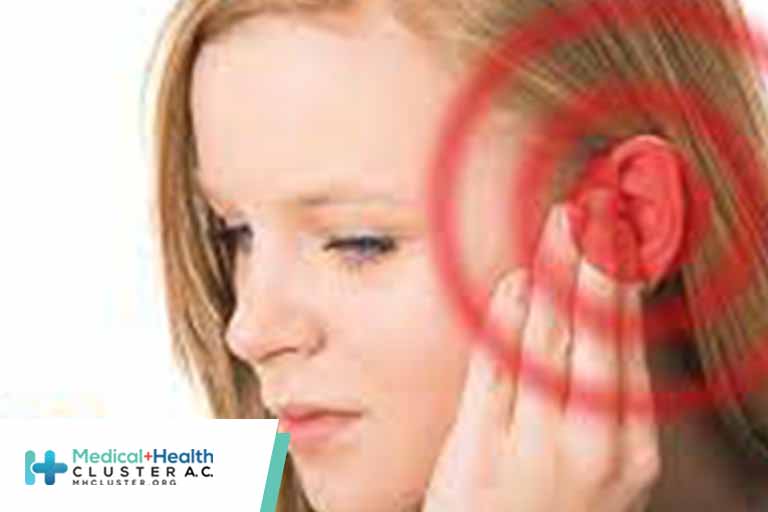En atención a la creciente preocupación sobre la confianza en...
Leer más
Tinnitus

Practice Essentials
Tinnitus is the perception of sound in the head or the ears. The term tinnitus derives from the Latin word tinnire, meaning to ring. Typically, an individual perceives the sound in the absence of outside sounds, and the perception is unrelated to any external source. Sound that only the patient hears is subjective tinnitus, while sound that others can hear as well is called objective tinnitus.
Many people experience tinnitus after exposure to a gunshot or a loud concert with modern amplification. This type of tinnitus can be annoying, but it usually resolves in a matter of hours. Tinnitus is a symptom (not a disease) and therefore reflects an underlying abnormality. Most often, tinnitus is associated with a sensorineural hearing loss, but tinnitus types such as pulsatile tinnitus, tinnitus with vertigo, fluctuating tinnitus, or unilateral tinnitus should be investigated thoroughly. [1]
Estimates of patients with tinnitus range from 10-15% of the population (30-40 million people). Of patients presenting with ear-related symptoms, 85% report experiencing tinnitus as well. Both adults and children report experiencing tinnitus. Development of tinnitus increases in incidence with age, although the rate of tinnitus in children has been reported as high as 13%.
Surveying adults in 12 countries of the European Union, Biswas et al found the estimated prevalence of tinnitus to be 14.7%. Ireland had the lowest rate, at 8.7%, and Bulgaria, the highest, at 28.3%. The prevalence of tinnitus in women was found to be 15.2%, compared with 14.0% in men. Increased age and reduced hearing status were associated with greater tinnitus prevalence. The odds of tinnitus occurrence were significantly greater in Northern European countries than in Western ones, the odds ratio (OR) for Western nations being 0.69. [2]
Workup in tinnitus
Each patient with the symptom of tinnitus deserves complete audiologic testing with pure-tone air, bone, and speech discrimination scores. Both pitch and loudness matching should be assessed. Minimum masking levels should also be obtained if treatment with ear-level devices is being considered.
Blood tests for syphilis (a fluorescent treponemal antibody-absorption [FTA-ABS]), a complete blood count (CBC), an autoimmune panel (antinuclear antibodies [ANAs], sedimentation rate, rheumatoid factor), and thyroid function tests for hypermetabolism may be useful.
Imaging studies include the following:
-
Magnetic resonance imaging (MRI) – In pulsatile tinnitus, may be needed to look for a glomus tumor, arteriovenous malformations, vascular anomalies, dural arteriovenous fistulas, and aneurysms of the carotid in the ear; for asymmetrical hearing loss or unilateral tinnitus, MRI of the internal auditory canals is indicated to look for an acoustic tumor
-
Computed tomography (CT) scanning – Will delineate a sigmoid sinus diverticulum or bony dehiscence over the jugular bulb
Management of tinnitus
Treatments for tinnitus, which include the following, have met with differing success:
-
Electric stimulation
-
Biofeedback
-
Repetitive transcranial magnetic stimulation
-
Neuromonics
-
Counseling
-
Support groups
-
Pharmacologic therapy
-
Tinnitus maskers
-
Hearing aids
-
Tinnitus feedback retraining
Although tinnitus is not a surgical disease for the most part, tinnitus due to a surgical lesion in the ear usually responds to treatment of that lesion. Typical lesions amenable to surgery include those caused by glomus tumors, sigmoid sinus diverticulum, arteriovenous malformation, and conductive hearing loss.
Créditos: Comité científico Covid




